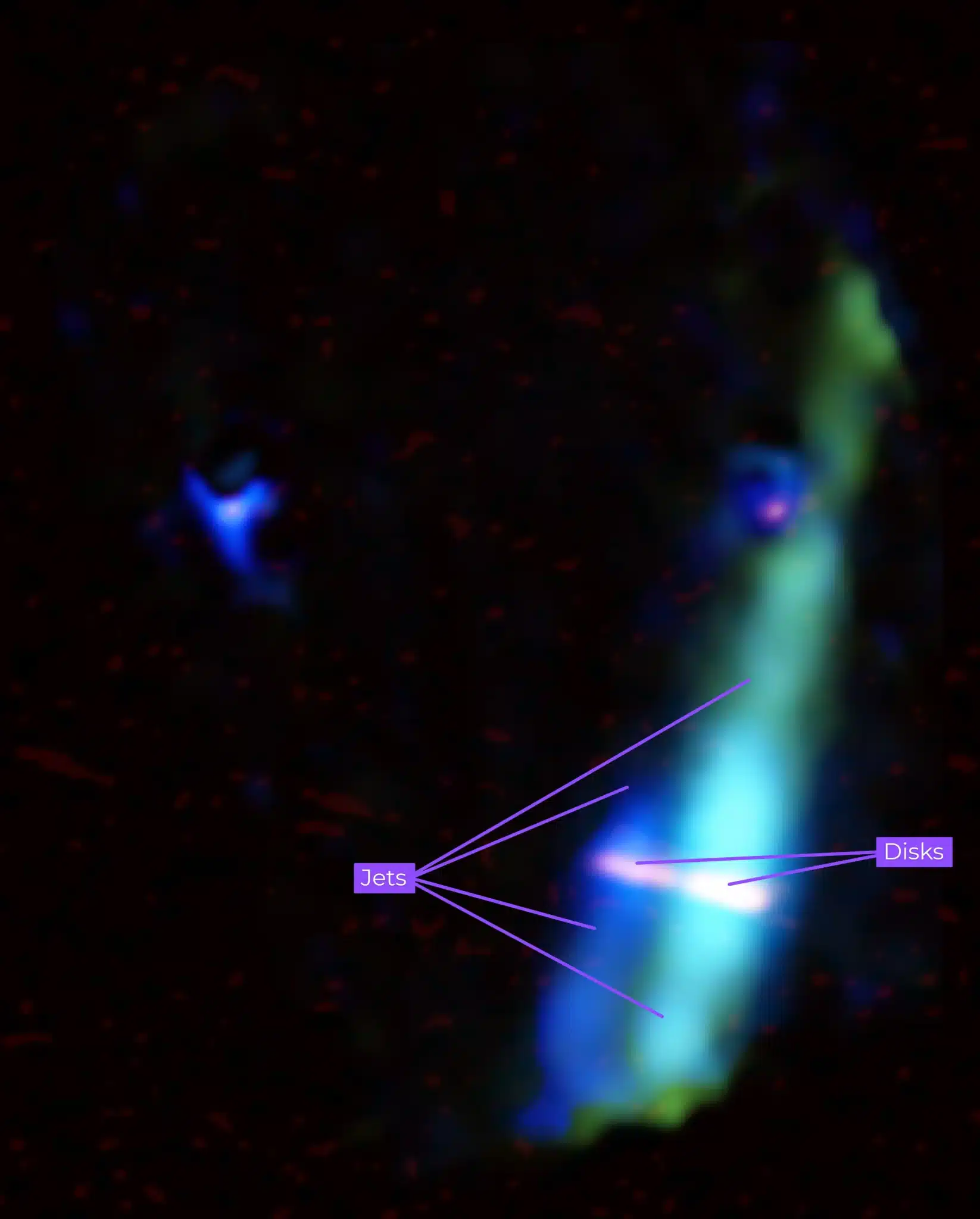The space telescope has now revealed that WL 20S, previously thought to be a single star, turns out to actually be a double star.
About 400 light-years from Earth, in a vast cloud of gas and dust, lies a large, well-studied star-forming region called Rho Ophiuchi. If we zoom in, we find the young star cluster WL 20. This region has been studied with at least five telescopes since the 1970s. So the researchers thought they knew the area inside out. But new observations using the James Webb Telescope now prove that astronomers were missing something all along.
Twin
When the researchers pointed the Webb telescope at WL 20, they were surprised. One of the stars in this cluster, WL 20S, is thought to be a single star. But now it has suddenly turned out that WL 20S is actually a double star that formed about 2 million to 4 million years ago. The discovery was made possible by the Webb Mid-Infrared Infrared Instrument (MIRI), which also revealed that the binary star has identical jets of gas shooting into space from its north and south poles.
surprised
The discoverers were amazed. “Our jaws dropped,” says research leader Mary Barsoni. “After decades of research, we thought we were quite familiar with this field. However, without MIRI we would not have known that it was actually two stars, or that these rays existed. This is truly amazing.”
Planets
The team was also surprised when they made additional observations using the Atacama Large Millimeter/submillimeter Array (ALMA). These observations show that both stars are surrounded by clouds of dust and gas. Given the age of stars, it is possible for planets to form in these disks.
transition
The combined results prove that the stars are in the final stages of their early lives. This gives scientists an opportunity to discover more about the transition from youth to adulthood in stars. ALMA can also detect clouds of residual formative material around young stars. These clouds are composed of gas and dust and contain whole molecules such as carbon monoxide, which emit light with longer wavelengths. The fact that these clouds are not observed in the ALMA data indicates that the stars have passed their initial stages of formation.


power
“The power of these two telescopes together is truly amazing,” says researcher Mike Ressler. “If we had not identified it as two stars, we might have thought it was a single disk with a hole in the center based on the ALMA results alone. However, we now have new information about two stars that are clearly in a critical phase of their evolution, with the formation processes gradually slowing down.”
Lots of clouds
How is it possible that WL 20 has been so comprehensively studied, but the double star has never been observed before? WL 20 lies behind dense clouds of gas and dust, which block most of the visible light (as seen by the human eye) from stars. The James Webb Telescope detects longer wavelengths, called infrared, that can penetrate these layers. Webb’s MIRI instrument is specifically designed to detect longer infrared wavelengths, making it well-suited for observations across obscure star-forming regions like WL 20.
The results once again highlight the inestimable value of the James Webb Telescope, the world’s first observatory that promises to solve many mysteries and provide deep insight into the origins of our universe. The telescope is expected to answer crucial questions and significantly change our view of the universe and its evolution. For now, it appears that the telescope is already on track to fulfill this promise. For example, without the telescope, we would not have discovered the true nature of WL 20S. “It’s amazing that this region has so much to teach us about the life cycle of stars,” says Ressler. “I’m really looking forward to seeing what else Webb reveals.”





